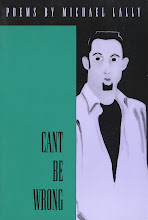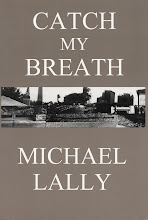That’s what they used to call us juvenile delinquents in the 1950s.
I always liked the sound of it, even then, especially because the music and art and books I loved, and grew to love even more, were always a “mixed up” combination of various approaches or means or styles or media, etc.
I love collages, and paintings that have words in them and/or real-world objects. I love, music that mixes “spoken word” and singing, or musical instruments and real world sounds, etc.
And most of all I love books that mix poetry and prose, or other forms.
Here’s a short shamrock list of three later discoveries that solidified my love for that kind of mixing it up:
1. Dante’s LA VITA NUOVA (I’ve already mentioned that it had a big impact on me as a kid, my first encounter with a book that mixed poetry and prose, as Dante presents each poem along with an explanation of the circumstances of its composition and meaning)
2. Jean Toomer’s CANE (a mix of poetry and prose that adds up to a most revealing and perceptive, as well as lyrical and oddly original, take on race and race relations in early 20th Century “America”)
3. William Carlos Williams’ PATERSON (the masterpiece of this kind of juxtaposition of poetry and prose, with everything from letters from the young Allen Ginsberg to bits of 18th-Century history texts, etc.)
And three examples from other “arts”—
1. MISHIMA (Paul Schrader’s movie about the modern Japanese writer Yukio Mishima, spectacularly shot by John Bailey, a friend at the time, who insisted I see it at a special screening where the film was shown on three different film stocks spliced together, to distinguish the three different subjects and moods of the film, the grainy black and white documentary style of the flashbacks to Mishima’s early life, the slightly washed out mundane dailiness of the color stock used to film the events of the day Mishima left his family at home to take over a military installation with his rightwing militarist followers as the first blow in what he hoped would be a national uprising to restore Japan to it’s militaristic glory, only to have it turn into a fiasco, leading Mishima to a sort of hari kari with the help of one of his loyalist’s, who cut off Mishima’s head, and the third stock for the unbelievably lush colors of the parts of the film that represented scenes from his novels and other writing)
2. GEORGE SCHNEEMAN’S COLLAGES (as well as his more famous collaborations with poets, but I have in mind one particular collage I bought from his recent retrospective—a private show in an empty Lower East Side apartment-between-residents, which the owner allowed the artist to use to hang paintings (usually of poets) from as far back as the 1960s, the frescoes he’s also known for, as well as vases and bowls etc. adorned with his bright and unique images, paintings of Italian landscapes, and the more recent post card size collages, about a hundred taped to a big white poster board I would have bought all of if I were rich, but instead it took three visits to the show, where I spent hours in front of that board, in a quandary over which to get, since every one of them was terrific, made from images cut out of early 20th-Century Italian magazines, among other sources, and then the leftover portion being used in the next collage with something cut out from another source and so on, completely surprising, unlikely, but beautiful combinations of colors and images, often including beautiful women, not photographs but drawings from magazines, too complicated to describe, but seductive, thoughtful, and unique)
3. INDIAN SUMMER (Which I also mentioned before as one of my favorite film soundtracks, in this case a half-hour documentary about the demolition of an entire valley in the Catskills for a new dam and watershed, it was the first recording I ever heard that was “multi-taped, mixing the sound of the actual bulldozers and other demolition machinery, and the men using them, with those of Pete Seeger and Michael Seeger on fiddle, banjo, guitar, bamboo flute, harmonica, pump organ, drum, etc. and other human sounds from the film—it was on Folkways Records, and included some other multi-taped music as well, but none that delighted me as much as INDIAN SUMMER)
Subscribe to:
Post Comments (Atom)
















No comments:
Post a Comment